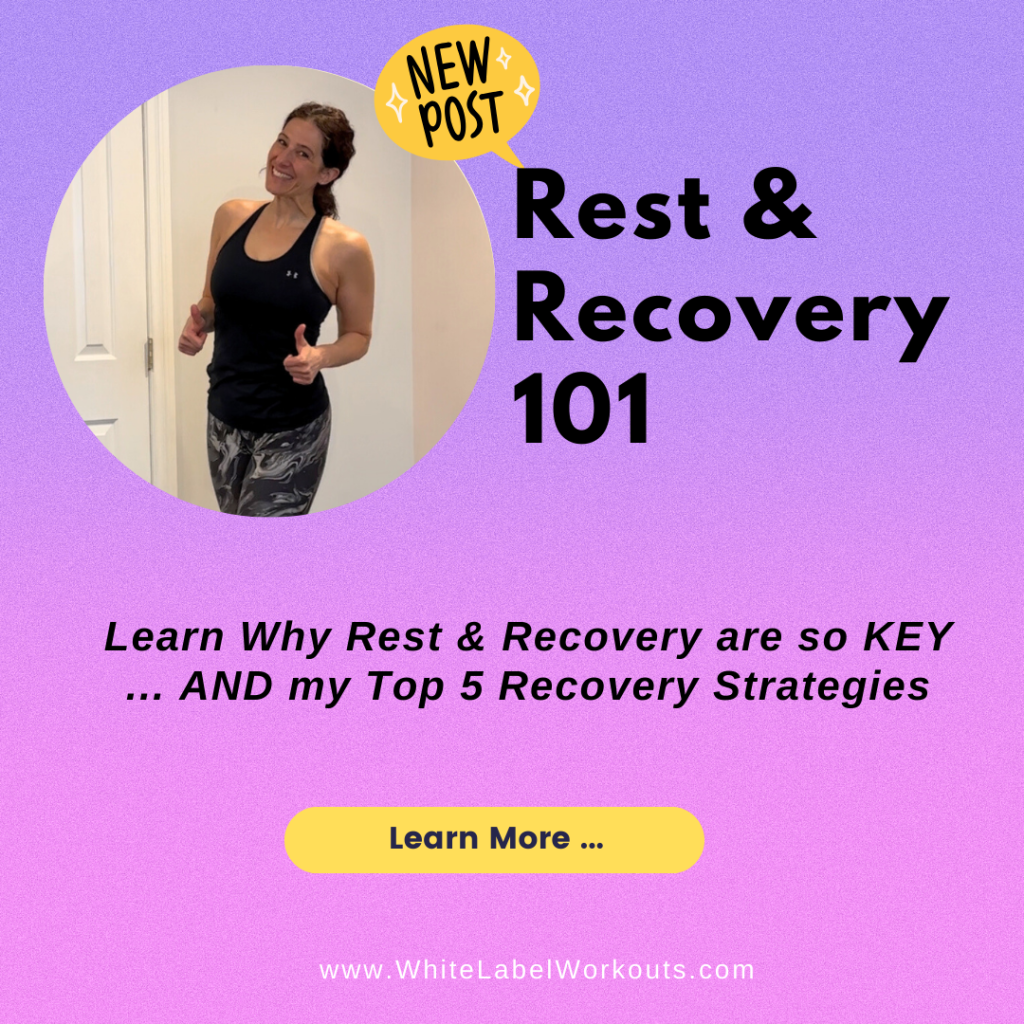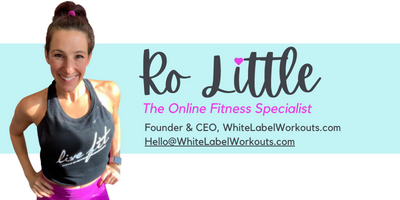
What an important week we’ve had … talking all about how KEY rest & recovery are in building sustainable fitness journeys, for ourselves & our clients.
We kicked off the week with the BIRD DOG Exercise Explainer – a perfect example of an awesome cool down move! Learn more & grab your white label BIRD DOG Explainer files here >
We then talked about the absolute NEED to do proper cooldowns at the end of all our sessions. AND – of course – a CLASSIC COOLDOWN was our white label workout of the week. Learn more & grab your white label COOLDOWN files here >
Rest and recovery are often the unsung heroes of any fitness regimen, yet they play a crucial role in helping your clients achieve their goals and maintain peak performance. So let’s break down why rest and recovery are so darn important! 🛌💤
Why Rest and Recovery Are Crucial:
Muscle Repair and Growth: When we exercise, we put our muscles through the wringer, causing micro-tears in the muscle fibers. It’s during rest that these tears are repaired, and our muscles grow stronger and more resilient. Without adequate rest, this repair process is compromised, hindering muscle growth and increasing the risk of injury.
Prevents Overtraining: Pushing our bodies too hard without proper rest can lead to overtraining syndrome. This not-so-fun condition is marked by symptoms like fatigue, decreased performance, and an increased risk of injury. By incorporating rest days into our workout routines, we give our bodies the chance to recover and avoid the pitfalls of overtraining.
Replenishes Energy Stores: Exercise depletes our glycogen stores and taxes our energy systems. Rest allows our bodies to replenish these stores, ensuring we have the energy we need to perform at our best during workouts.
Supports Immune Function: Intense exercise can temporarily suppress the immune system, making us more susceptible to illness. Rest and recovery help bolster our immune function, keeping us healthy and able to continue crushing our fitness goals.
Regulates Hormones: Exercise and rest play key roles in hormone regulation. Intense exercise can elevate stress hormones like cortisol, while rest helps bring them back into balance. This hormonal equilibrium is crucial for overall health and well-being.
Improves Mental Health: Rest isn’t just important for our bodies; it’s essential for our minds too. Taking time to rest and recharge can reduce stress, improve mood, and enhance mental clarity, allowing us to approach our workouts with focus and positivity.
Best Recovery Strategies:
Now that we’ve emphasized the importance of rest and recovery, let’s explore some top-notch strategies to help your clients make the most out of their downtime:
Active Recovery: Encourage your clients to incorporate active recovery days into their routine. This could include activities like yoga, stretching, or a leisurely walk. These low-intensity workouts can help promote blood flow, reduce muscle soreness, and enhance overall recovery.
Nutrition: Remind your clients that proper nutrition plays a key role in recovery. Encourage them to consume a balanced diet rich in lean protein, healthy fats, and complex carbohydrates to support muscle repair and replenish energy stores. Additionally, hydration is crucial for optimal recovery, so remind your clients to drink plenty of water throughout the day.
Sleep: Quality sleep is essential for recovery, so emphasize the importance of getting enough shut-eye each night. Encourage your clients to establish a consistent sleep schedule, create a relaxing bedtime routine, and prioritize creating a restful sleep environment free from distractions.
Foam Rolling and Massage: Foam rolling and massage therapy can help release tension in tight muscles, improve circulation, and enhance recovery. Encourage your clients to incorporate foam rolling into their post-workout routine or consider scheduling regular massage appointments to keep their muscles feeling fresh.
Listen to Your Body: Remind your clients to listen to their bodies and pay attention to how they’re feeling. Encourage them to take rest days when needed, modify workouts if they’re feeling fatigued, and speak up if they’re experiencing any pain or discomfort. Rest is not a sign of weakness but rather a necessary part of the fitness journey.
By implementing these recovery strategies, your clients can optimize their rest and recovery, allowing them to bounce back stronger, fitter, and more energized for their next workout. Remember, it’s not just about how hard you train but also how well you recover that determines your success in reaching your fitness goals
How to Tell If Your Clients Are Getting Enough Rest:
Persistent Fatigue: If your clients are constantly feeling tired, despite getting enough sleep, it could be a sign that they’re not allowing their bodies enough time to recover from workouts.
Plateauing Progress: Are your clients hitting a plateau in their performance or seeing diminishing returns from their efforts? It might be time to dial back the intensity and prioritize rest.
Increased Irritability: Exercise is a stressor on the body, and without adequate rest, that stress can spill over into other areas of life, leading to increased irritability and mood swings.
In conclusion, rest and recovery are non-negotiables when it comes to achieving fitness goals and maintaining overall health and well-being. By prioritizing rest, we give our bodies the time and resources they need to repair, replenish, and grow stronger. So let’s embrace rest as a vital part of the journey to becoming our fittest, healthiest selves! 💪
This week’s White Label RECOVERY Resources:
Grab your BIRD DOG white label exercise explainer here >
Grab your CLASSIC COOLDOWN white label workout here >
Is this content helpful? I’d love to hear from you! And let me know what topics you’d like me to cover next … I appreciate your feedback so much!!
Much love,
Xoxo ~ Ro ~ Your Online Fitness Specialist




